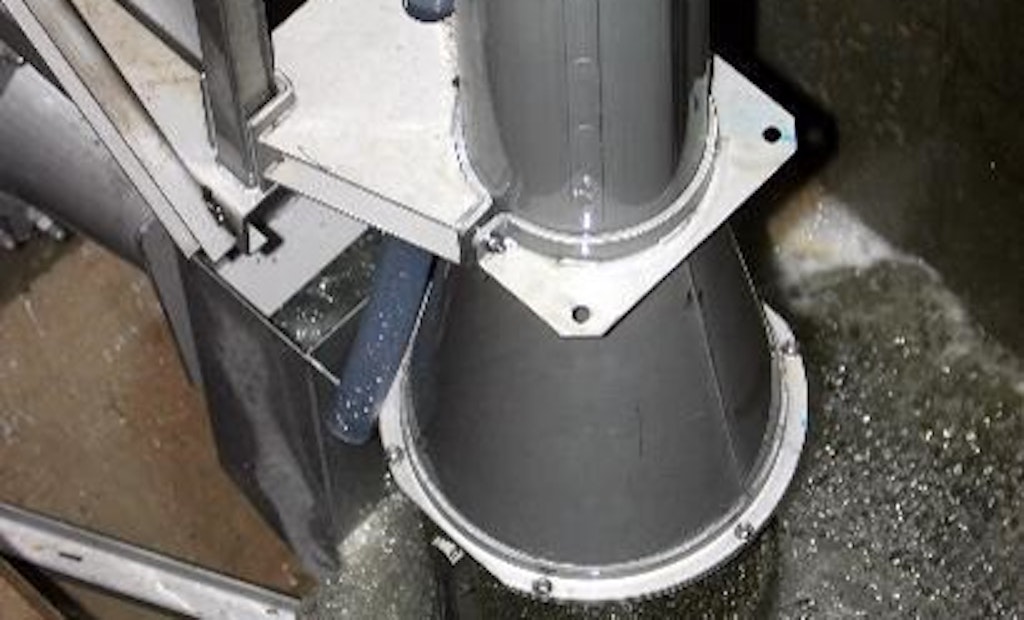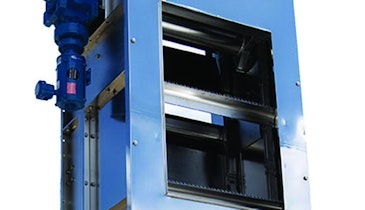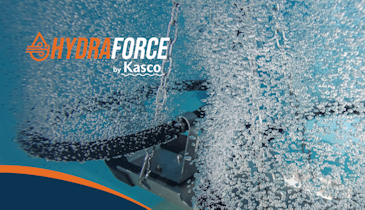Interested in Headworks?
Get Headworks articles, news and videos right in your inbox! Sign up now.
Headworks + Get AlertsOostburg Wastewater Treatment Plant found Huber’s RoK4 Vertical Fine Screen when seeking out a new headworks screening solution. The WWTP’s engineers were elated with their find because they had doubted that a solution existed that could meet their requirements and limitations.
Oostburg’s WWTP is a lean operation with limitations in space for screening technology and in the staff resources available to manage, maintain and report on the village’s processes. Because of these limitations and needs, the new fine screen solution must:
- Improve screening potential
- Reduce operational costs
- Operate in confined space
- Eliminate hands-on management
Challenge
Even though space was limited, Oostburg knew that putting a headworks screening solution in place would improve their operational efficiency. The WWTP also wanted to upgrade their technology from the aging and costly chopper-style comminutor in use at the time.
Solution
Oostburg truly maximizes the RoK4’s design because they require the system to operate in a completely vertical motion as it pulls solids from the headworks wet well. The RoK4 was installed with the system’s screen basket in the area that the comminutor occupied. This design required that the system raise the screenings vertically to the floor above for disposal. During the process upward, the screenings are washed, transported, dewatered, compacted and deposited into continuous bagging. This all takes place in 1 square meter of floor space. Since the RoK4’s presence eliminates the need to chop solids, the comminutor isn’t missed.
Oostburg WWTP’s operations are managed and maintained by a one-man team, but because of the RoK4, he has time beyond required maintenance, lab work and environment reporting activities to find new ways to leverage the plant’s technologies. The RoK4 puts small facilities technologically above par among similar plants.
Clean, quiet work
The WWTP team was surprised by the scale of improvements that the RoK4 provided to operations. The team saw improvements to the quality of their screenings and a reduction to the downstream workload as the solution worked flawlessly day after day to:
- Pull rags out in a vertical motion at the headworks
- Eliminate maintenance headaches downstream rag clogs can cause
- Minimize the odors and noises of the screening process
Four factors illustrate the RoK4’s clean machine image:
- The channel is cleaner from the onset. It removes the solid gunk before it moves downstream.
- It is “low-odor” by design. Any odors that result from screenings are concealed by the closed basket design.
- Even the organics get “laundered”. It backwashes organics into the system for treatment. It’s a hands-off process. It washes, dewaters and compacts solids and then send them directly to barrels through a continuous bagging process.
Durability, reliability and low downtime
RoK4 is rock solid technology made completely of stainless steel. There is no corrosion — even in the highly corrosive wet well environment — is known for its long-term durability without blemish.
Oostburg’s RoK4 has required minimal repair or parts replacement with only one set of fiberglass brushes replaced over its six year lifetime.
RoK4 drives huge improvements in a WWTP’s maintenance and repair resources – both human and budgetary. Man-hours do not have to be committed to its operation, a repair budget is unnecessary and its maintenance schedule is minimal. Downtime associated with the RoK4 is practically non-existent. The removal of solids in the headworks reduces the workload for downstream components to such an extent that the period between rebuilds on downstream components such as RF and raw pumps and clarifiers are extended. This is bottom line reality for Oostburg since rebuilds can cost as much as $5,000 per component per rebuild.
“The RoK4 Vertical Fine Screen is an amazing solution. It works just as well today as when it was brand new. It has been clean as a whistle since day one,” says Greg Lemahieu, the plant operator at Village of Oostburg.
Support as solid as the solution
According to Oostburg’s team, they have experienced personal, responsive support at the rare points that its has actually required it. Needs are matched to the right expertise –even connecting customers with technicians and engineers when questions require their attention. Support understands the urgency of WWTP operations and handles order processing with speed and accuracy.
RoK4’s design and manufacturing quality provides clients with reliable performance. Hard-working technology does require parts replacement and maintenance and when that is required, clients find the same reliability in Huber’s support and services that they discover in using its technology. Huber’s goal is to make maintenance and support hassle-free. Huber’s experience with municipalities and with wastewater processes is extensive as is its knowledge of the technologies it provides. This industry-technology insight allows Huber to work with organizations to ensure that systems are geared to perfectly match up to immediate tactical challenges and long-term strategic goals.






